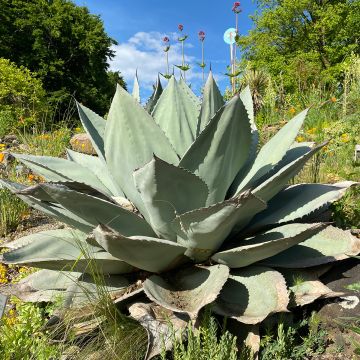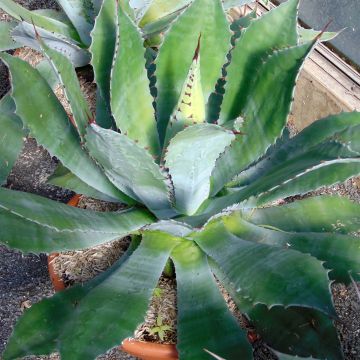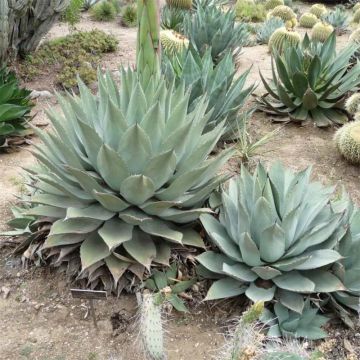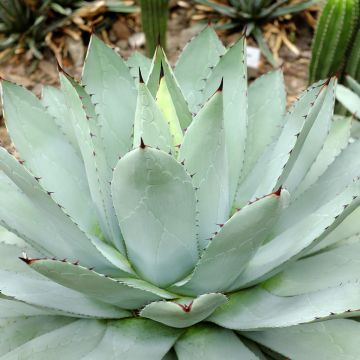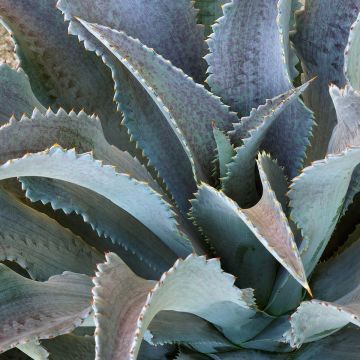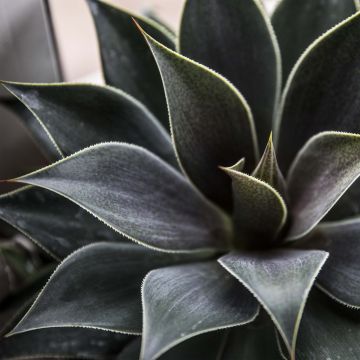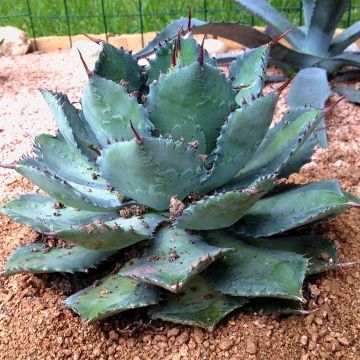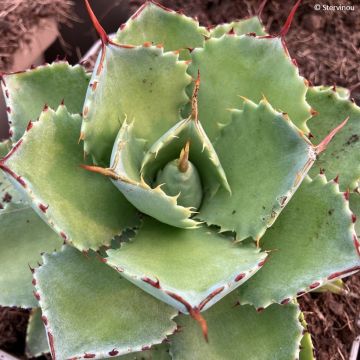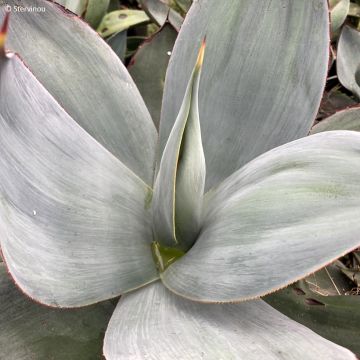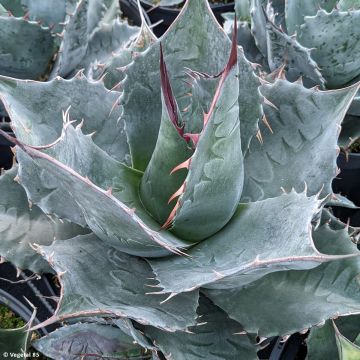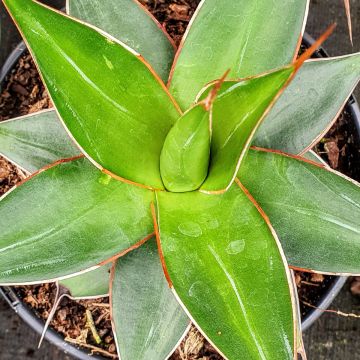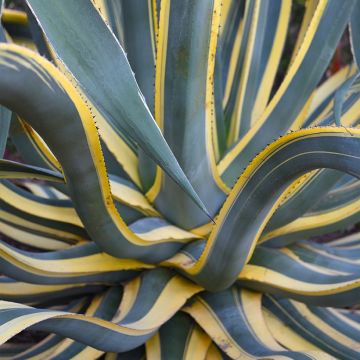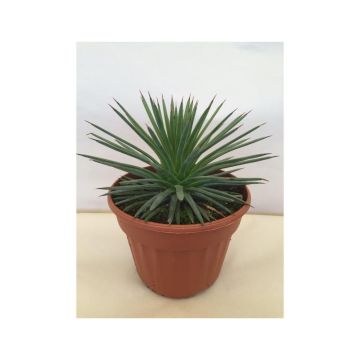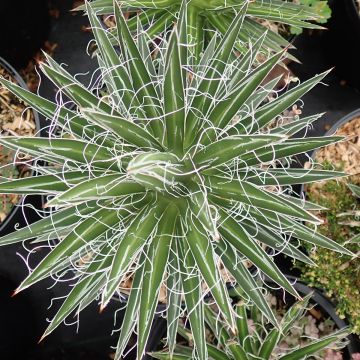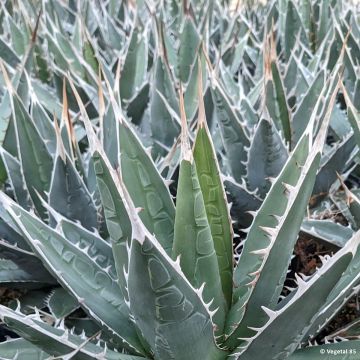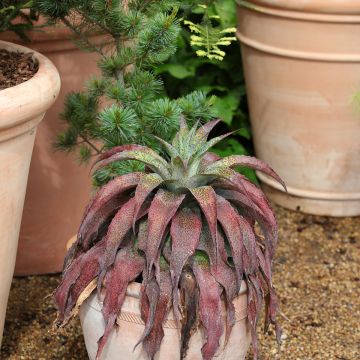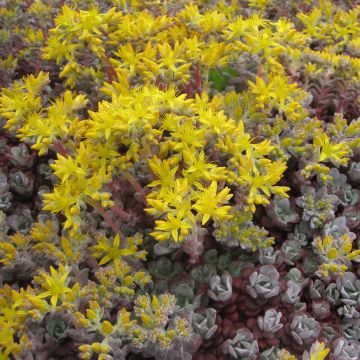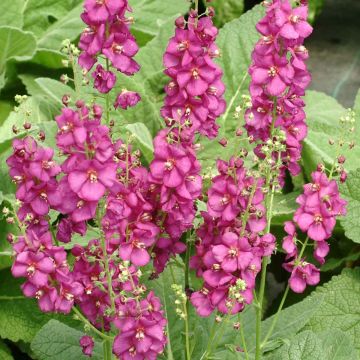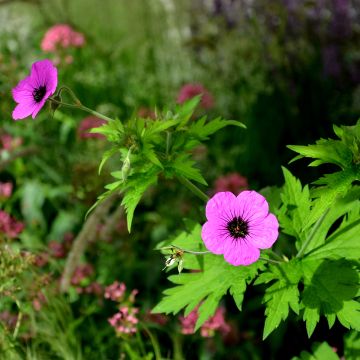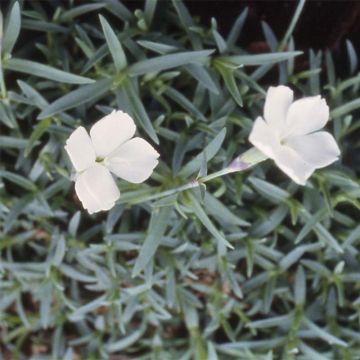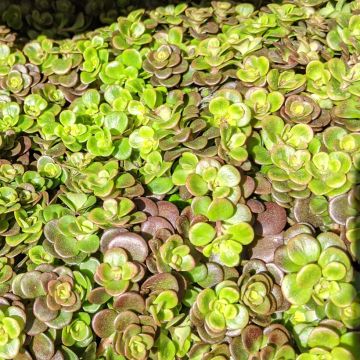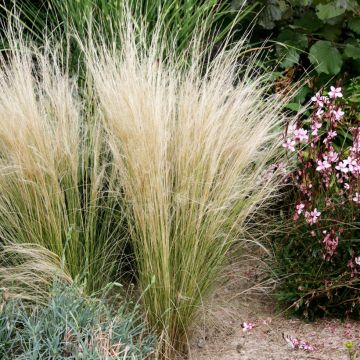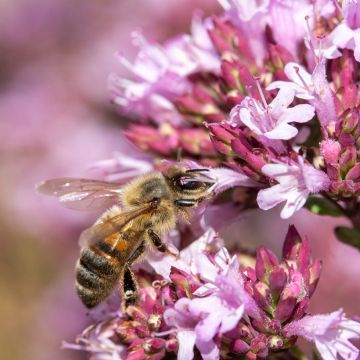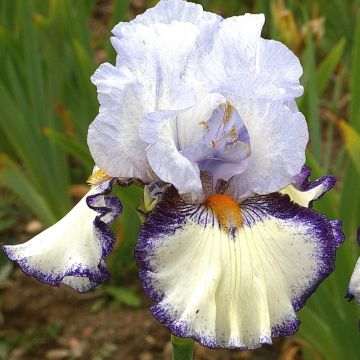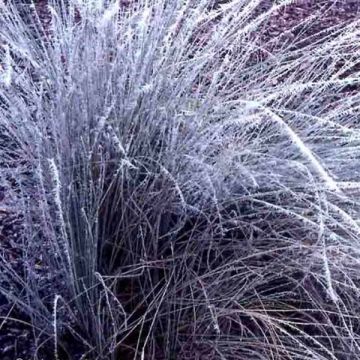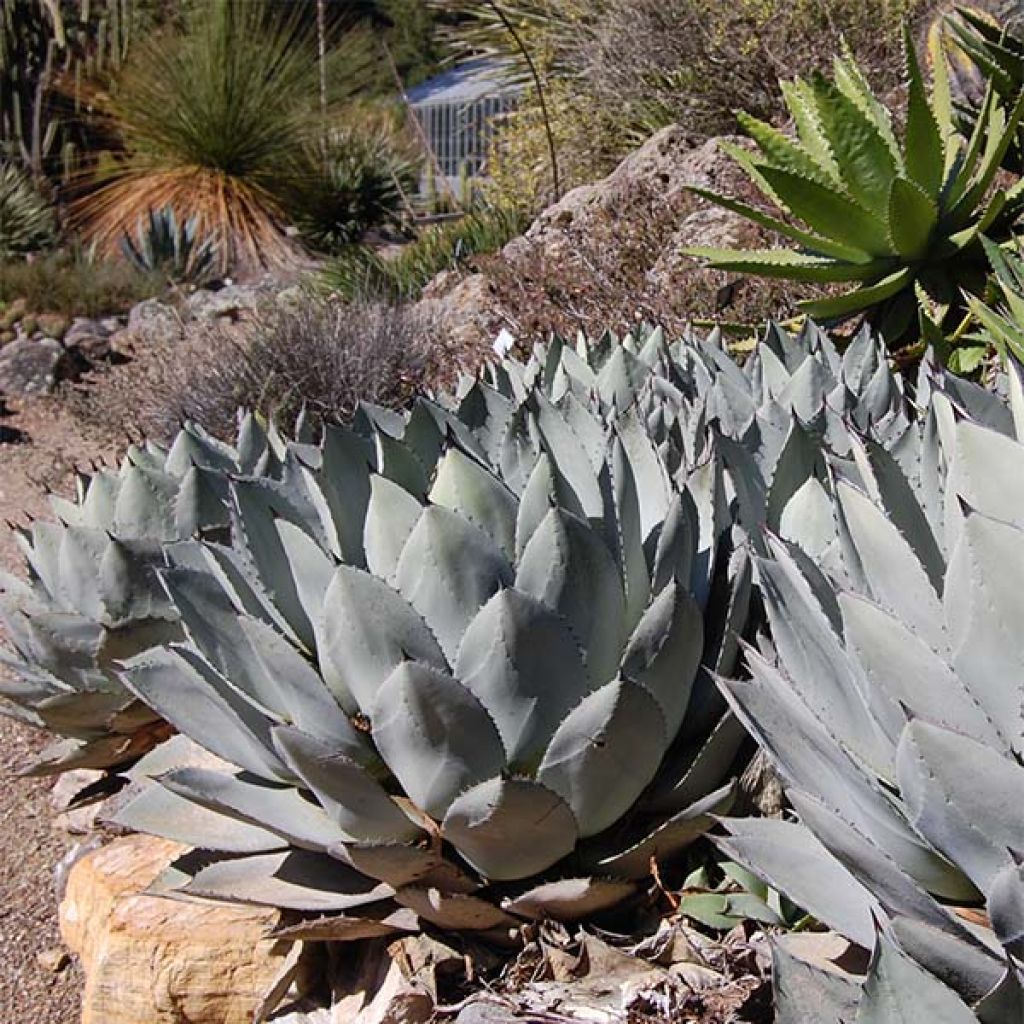

Agave parryi var. huachucensis
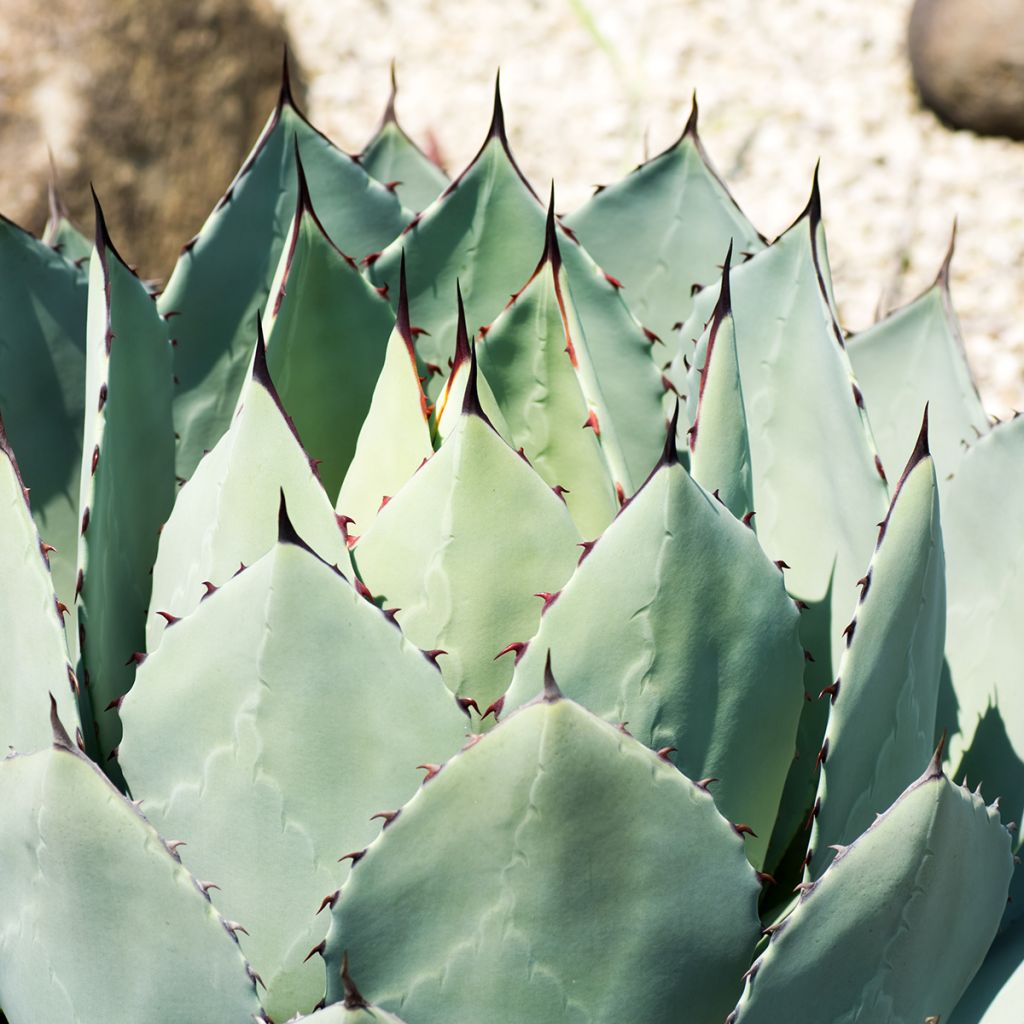

Agave parryi var. huachucensis
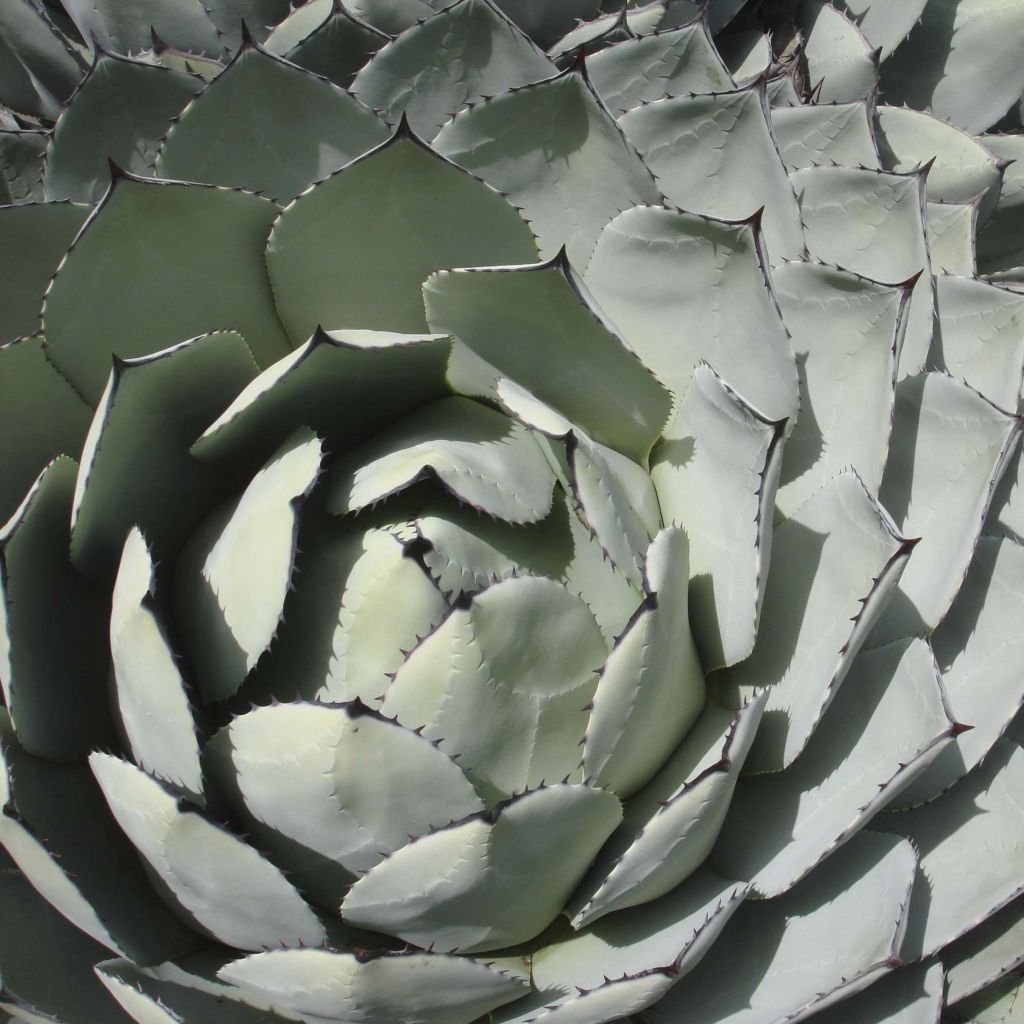

Agave parryi var. huachucensis
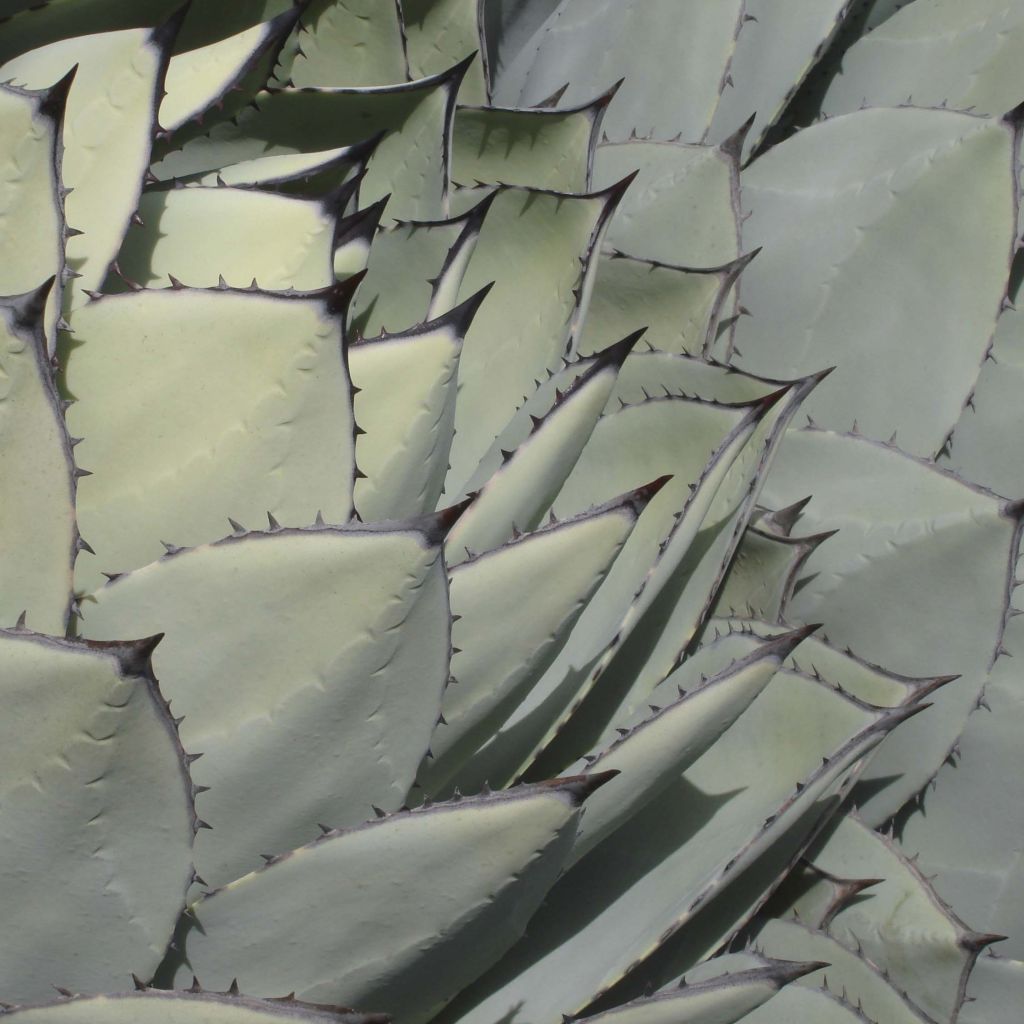

Agave parryi var. huachucensis
Agave parryi var. huachucensis
Agave parryi var. huachucensis
Artichoke agave
Why not try an alternative variety in stock?
View all →This plant carries a 12 months recovery warranty
More information
We guarantee the quality of our plants for a full growing cycle, and will replace at our expense any plant that fails to recover under normal climatic and planting conditions.
From €5.90 for pickup delivery and €6.90 for home delivery
Express home delivery from €8.90.
Does this plant fit my garden?
Set up your Plantfit profile →
Description
Agave parryi var. huachucensis is a subspecies of Parry's Agave, which differs mainly in the number of leaves that make up its rosette, as well as their more tapered shape. The plant is of medium size for the genus. It develops into a well-regulated bluish rosette, which sometimes gives the impression of being dishevelled by the wind due to its curved leaves all in the same direction. The excellent hardiness of this perennial plant in porous, dry, and poor soil is a boon for collectors of exotic plants. A godsend for arid situations, thin soils, and large rock gardens, this agave will naturally structure a minimalist, mineral design in a dry garden and also on a south-facing terrace.
Native to the extreme south of Arizona in the USA, Agave parryi var. huachucensis is a little-known agave, valued by enthusiasts who seek exotic plants capable of surviving cold and humid winters. This slow-growing botanical species is adapted to semi-desert climates, which are very hot in summer and mild in winter, but withstands heavy frosts if planted in dry soil. It belongs to the Asparagaceae family (formerly Agavaceae), just like Yuccas. This perennial succulent plant has rhizomes capable of producing suckers. Like a large cabbage, it is composed of many overlapping leaves like slates on a roof. The resulting rosette is tall and wide, reaching 75cm (30in) at maturity. The smooth, rigid, and very thick leaves are bluish in colour and edged with spines. The tip of each leaf is armed with a sharp spine ranging from black to reddish. After many years, the rosette matures and produces a flowering stalk reaching 1.5 to 2m (5ft to 7ft) in height. It branches out, each bearing flat and spherical panicles, 7 to 10cm (3 to 4 in) wide, composed of a myriad of small yellow-green flowers. The plant, classified as semelparous, dies after flowering, which lasts several months, having taken care to produce small peripheral rosettes to ensure its perpetuity.
This agave will find its place in a large rock garden or at the edges of a dry garden. It will suit a minimalist, mineral design punctuated by wild grasses like Stipa ichu or Stipa gigantea. It can be planted alongside opuntias, giant fennel, quite hardy cacti (Cleistocactus strausii, Cylindropuntia imbricata), and equally undemanding plants. This agave can also be cultivated in a very large pot on a terrace, carefully choosing the sunniest spot, protected from winter rains.
Agave is an edible plant, used in Mexico to make mescal, an alcoholic beverage obtained by fermenting its juice rich in sugars. It is also used in traditional medicine in Mexico, Brazil, and India, and has proven antifungal properties. Very attractive to bees and nectar-seeking insects, the inflorescences attract many pollinators.
Report an error about the product description
Agave parryi var. huachucensis in pictures
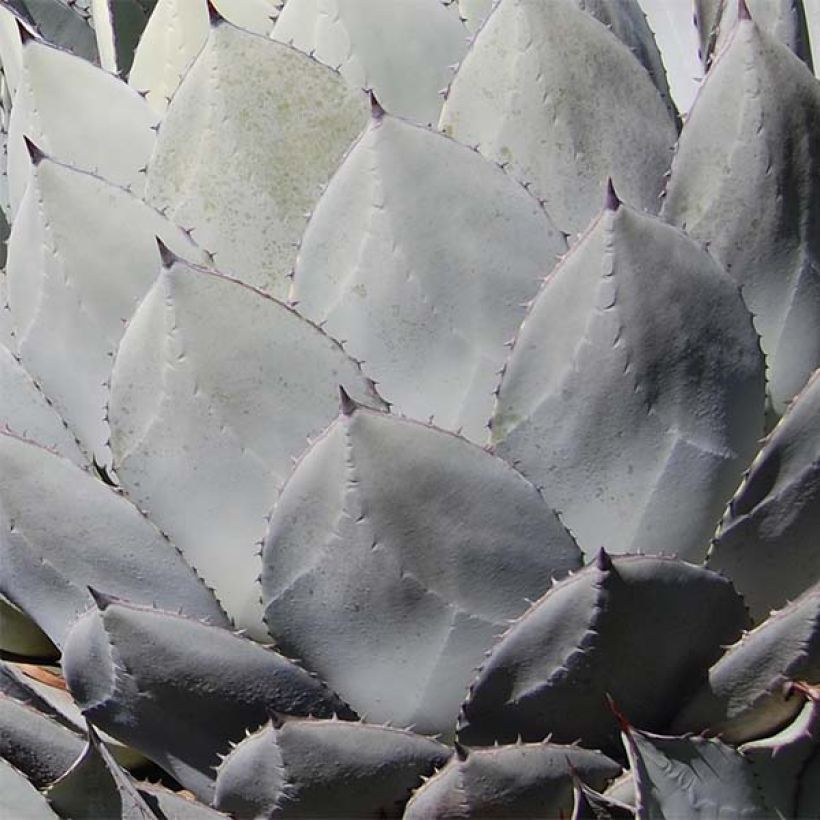

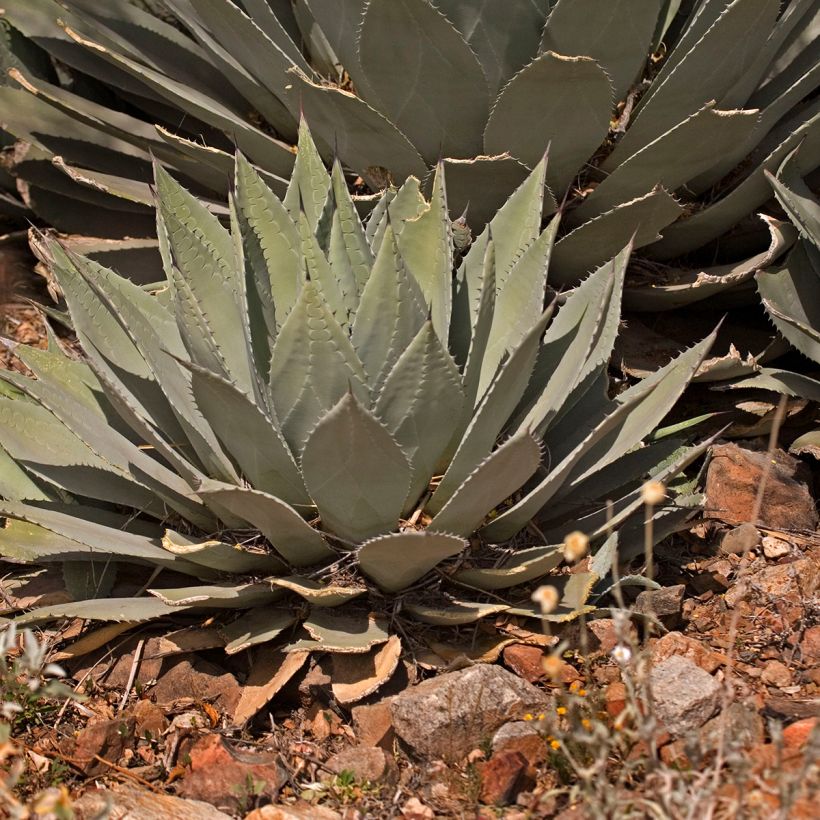

Flowering
Foliage
Plant habit
Botanical data
Agave
parryi var. huachucensis
Agavaceae
Artichoke agave
North America
Other Agave
Planting and care
Plant in full sun, in well-drained poor, stony, limestone, or sandy soil. It tolerates winter humidity and cold quite well, but the combination of these two elements often leads to the appearance of necrosis on the foliage. Protect it from excessive humidity in regions with very rainy winters. Since it perfectly tolerates dry, even arid soils in summer, for example, it is possible to dig a 50cm (20in) hole and fill it with a mixture of rocks and light soil. Plant the agave, ensuring its collar is isolated from stagnant water. The drier the soil, the more it will resist intense frost, up to about -18°C (-0.4°F).
As the plant reaches a large size, it must be cultivated in very large pots, preferably terracotta or wooden containers. Ensure the pot has good drainage.
Handle this plant with gloves and goggles to avoid injuries from its sharp spines.
Planting period
Intended location
Care
-
, onOrder confirmed
Reply from on Promesse de fleurs
Mediterranean perennials
Haven't found what you were looking for?
Hardiness is the lowest winter temperature a plant can endure without suffering serious damage or even dying. However, hardiness is affected by location (a sheltered area, such as a patio), protection (winter cover) and soil type (hardiness is improved by well-drained soil).

Photo Sharing Terms & Conditions
In order to encourage gardeners to interact and share their experiences, Promesse de fleurs offers various media enabling content to be uploaded onto its Site - in particular via the ‘Photo sharing’ module.
The User agrees to refrain from:
- Posting any content that is illegal, prejudicial, insulting, racist, inciteful to hatred, revisionist, contrary to public decency, that infringes on privacy or on the privacy rights of third parties, in particular the publicity rights of persons and goods, intellectual property rights, or the right to privacy.
- Submitting content on behalf of a third party;
- Impersonate the identity of a third party and/or publish any personal information about a third party;
In general, the User undertakes to refrain from any unethical behaviour.
All Content (in particular text, comments, files, images, photos, videos, creative works, etc.), which may be subject to property or intellectual property rights, image or other private rights, shall remain the property of the User, subject to the limited rights granted by the terms of the licence granted by Promesse de fleurs as stated below. Users are at liberty to publish or not to publish such Content on the Site, notably via the ‘Photo Sharing’ facility, and accept that this Content shall be made public and freely accessible, notably on the Internet.
Users further acknowledge, undertake to have ,and guarantee that they hold all necessary rights and permissions to publish such material on the Site, in particular with regard to the legislation in force pertaining to any privacy, property, intellectual property, image, or contractual rights, or rights of any other nature. By publishing such Content on the Site, Users acknowledge accepting full liability as publishers of the Content within the meaning of the law, and grant Promesse de fleurs, free of charge, an inclusive, worldwide licence for the said Content for the entire duration of its publication, including all reproduction, representation, up/downloading, displaying, performing, transmission, and storage rights.
Users also grant permission for their name to be linked to the Content and accept that this link may not always be made available.
By engaging in posting material, Users consent to their Content becoming automatically accessible on the Internet, in particular on other sites and/or blogs and/or web pages of the Promesse de fleurs site, including in particular social pages and the Promesse de fleurs catalogue.
Users may secure the removal of entrusted content free of charge by issuing a simple request via our contact form.
The flowering period indicated on our website applies to countries and regions located in USDA zone 8 (France, the United Kingdom, Ireland, the Netherlands, etc.)
It will vary according to where you live:
- In zones 9 to 10 (Italy, Spain, Greece, etc.), flowering will occur about 2 to 4 weeks earlier.
- In zones 6 to 7 (Germany, Poland, Slovenia, and lower mountainous regions), flowering will be delayed by 2 to 3 weeks.
- In zone 5 (Central Europe, Scandinavia), blooming will be delayed by 3 to 5 weeks.
In temperate climates, pruning of spring-flowering shrubs (forsythia, spireas, etc.) should be done just after flowering.
Pruning of summer-flowering shrubs (Indian Lilac, Perovskia, etc.) can be done in winter or spring.
In cold regions as well as with frost-sensitive plants, avoid pruning too early when severe frosts may still occur.
The planting period indicated on our website applies to countries and regions located in USDA zone 8 (France, United Kingdom, Ireland, Netherlands).
It will vary according to where you live:
- In Mediterranean zones (Marseille, Madrid, Milan, etc.), autumn and winter are the best planting periods.
- In continental zones (Strasbourg, Munich, Vienna, etc.), delay planting by 2 to 3 weeks in spring and bring it forward by 2 to 4 weeks in autumn.
- In mountainous regions (the Alps, Pyrenees, Carpathians, etc.), it is best to plant in late spring (May-June) or late summer (August-September).
The harvesting period indicated on our website applies to countries and regions in USDA zone 8 (France, England, Ireland, the Netherlands).
In colder areas (Scandinavia, Poland, Austria...) fruit and vegetable harvests are likely to be delayed by 3-4 weeks.
In warmer areas (Italy, Spain, Greece, etc.), harvesting will probably take place earlier, depending on weather conditions.
The sowing periods indicated on our website apply to countries and regions within USDA Zone 8 (France, UK, Ireland, Netherlands).
In colder areas (Scandinavia, Poland, Austria...), delay any outdoor sowing by 3-4 weeks, or sow under glass.
In warmer climes (Italy, Spain, Greece, etc.), bring outdoor sowing forward by a few weeks.

































